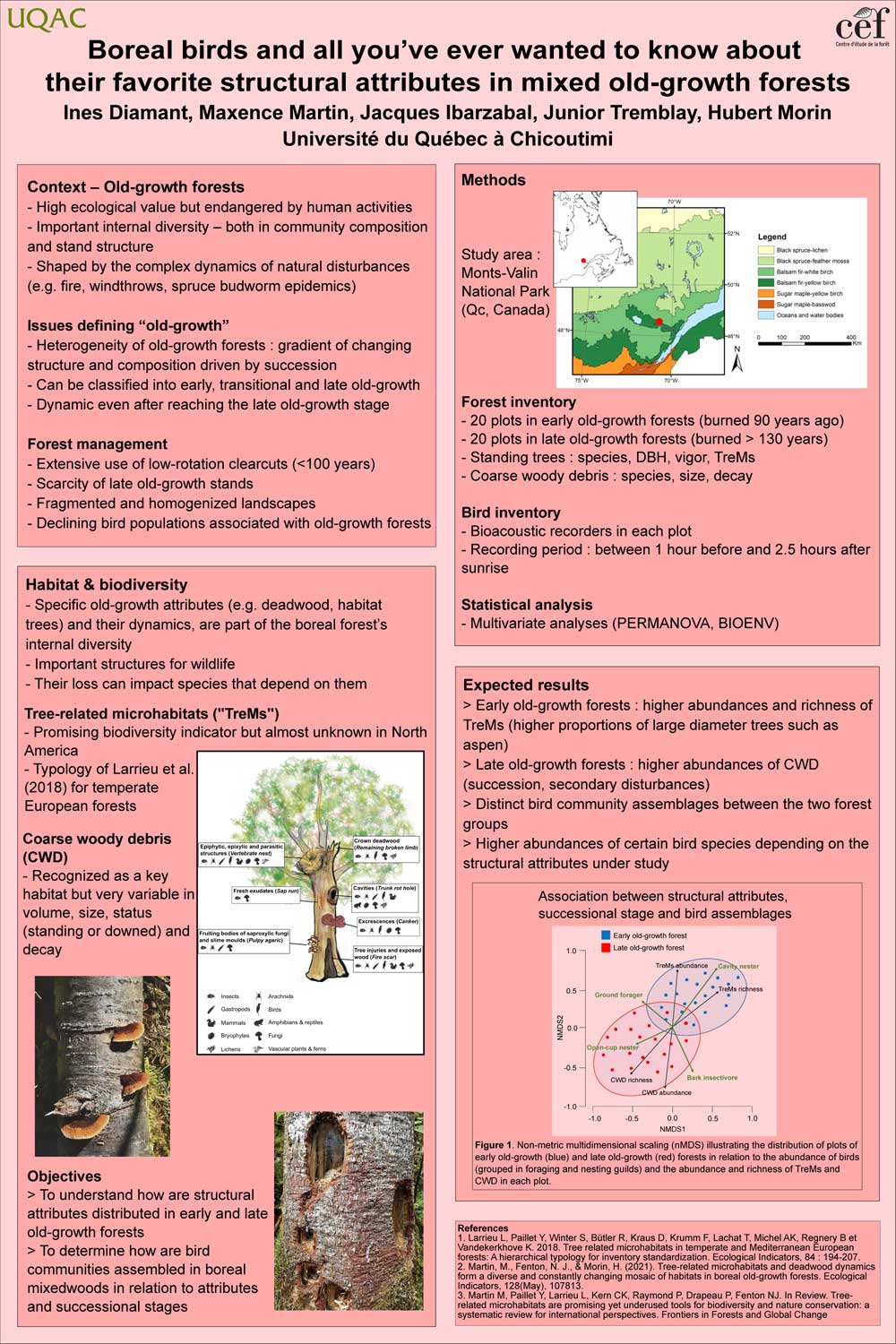
Old-growth forests are often represented as a homogeneous group, when in fact they are very diverse in terms of tree structure and tree composition. This heterogeneity that characterizes old-growth forests offers many specific habitats that can benefit many different bird species. However, in recent decades, forest management has contributed to the rejuvenation, homogenization and fragmentation of boreal landscapes. The loss of specific structures or attributes of old-growth boreal forests, such as coarse woody debris or habitat trees, can have negative consequences on forest species that depend on them. Therefore, the goal of this project is to understand how structural attributes of old-growth boreal forests and their combinations affect bird assemblages. Our first objective is to determine the composition of bird communities as a function of different structural attributes of old-growth forests. The second objective is to determine if different bird communities are observed between different stages of forest succession. Fieldwork was conducted at the Monts-Valin National Park situated in the Saguenay region (Quebec, Canada). We sampled 40 plots – 20 in "early" old-growth forests (burned 90 years ago) and 20 in "late" old-growth forests (unburned for at least 130 years) – in which structural attributes, including tree-related microhabitats and coarse woody debris, were inventoried. Bioacoustic recorders have been installed in each plot, from which bird species and abundances will be identified. We expect to observe different bird assemblages depending on the presence of specific structural attributes (snags, tree-related microhabitat diversity) partially dependent on successional stage, here in combination with environmental conditions and the impact of recent secondary disturbances. The results of this project might help orienting ecosystem-based management towards more effective conservation and restauration efforts.

